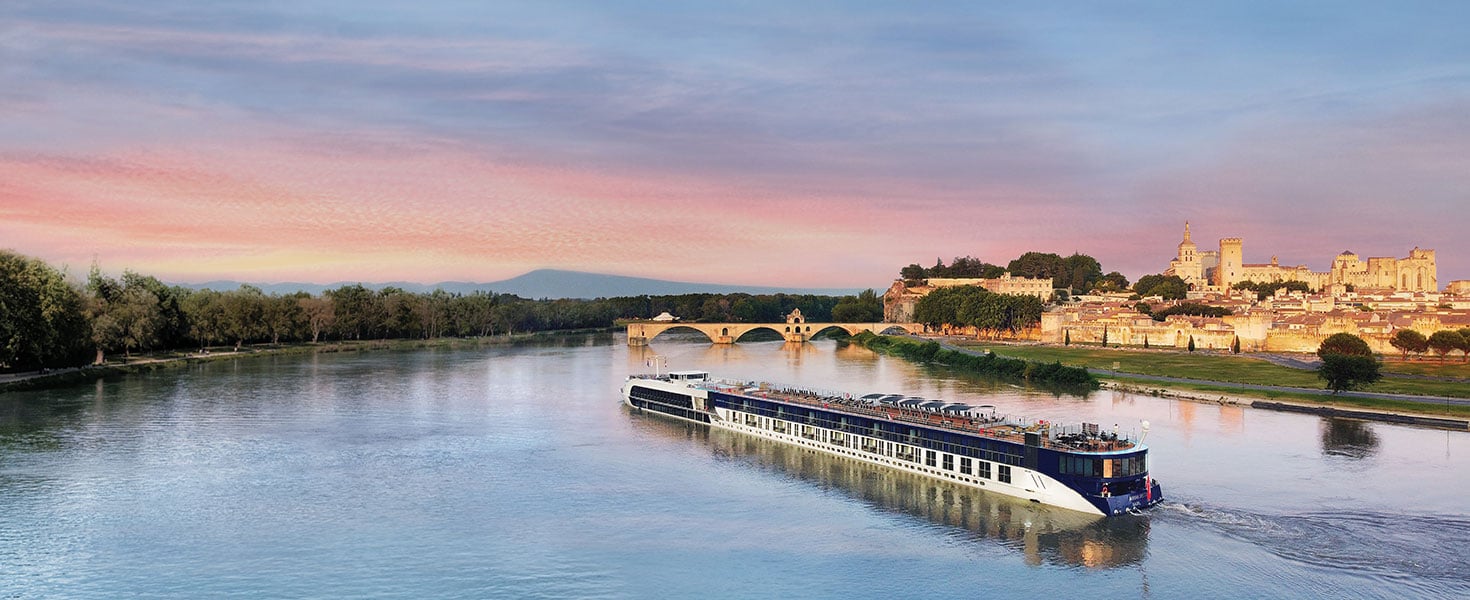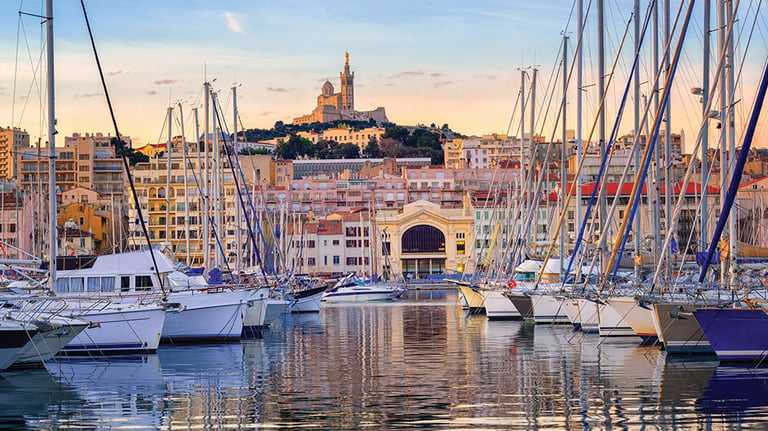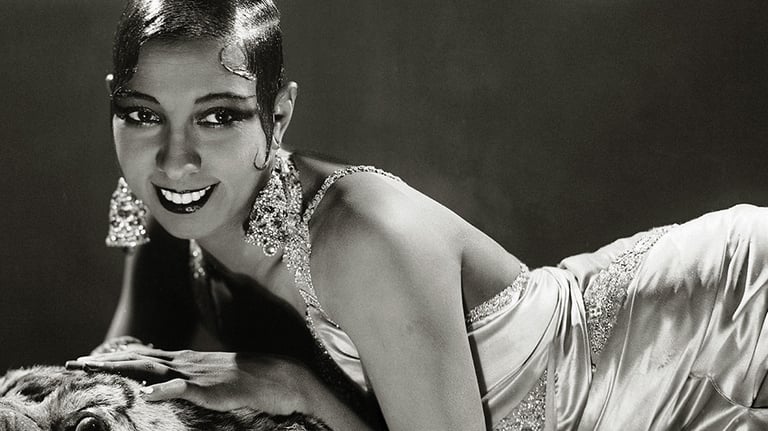Cruising Through Black History and Culture in France
AmaWaterways’ Soulful Experience cruise-tour highlights France’s lesser-known Black history and culture in Paris and storied towns along the Rhône River

I was feeling a bit anxious as I walked into the main restaurant on board the AmaKristina. Would I stick out because I was traveling alone? As I was searching for a place to sit, a group waved me over to join them. Surprised and relieved, I took a chair, and we went from strangers to friends pretty much immediately. And so, the fun began on AmaWaterways’ Soulful Experience itinerary highlighting France’s Black history and culture. With only about 60 passengers, almost all Black, this journey would be an intimate experience.

Lively Marseille
We boarded the AmaKristina in Arles in the South of France for our seven-night cruise on the Rhône River that would stop in numerous towns along the way as we traveled north to Lyon, where we could disembark and take a train to Paris for an additional three days of sightseeing.
Our first excursion took us to Marseille, France’s second-largest city. There, we enjoyed a guided Black Heritage Tour designed specifically for AmaWaterways’ guests. The Museum of the Civilizations of Europe and the Mediterranean
(Mucem) captivated on first sight: The architecture was stunning, from the concrete lacework-clad exterior, to the external ramps that wind their way to the rooftop terrace, to the footbridge that links the museum to 17th-century Fort Saint-Jean. Inside, exhibits touched on all sorts of topics, from magic in France, to the history and diversity of the Romani populations of Europe, to superstar pharaohs and Arabian graffiti.
We also visited Marseille’s thrumming Vieux Port (Old Port), where African drummers and dancers entertained alongside the harbor and the café-lined main street. From there, the Petit Train Marseille, an old-fashioned open-air tourist train, took us to Le Panier District, the city’s oldest neighborhood, and Joliette Plaza, which is depicted in the novel Banjo by Harlem Renaissance author Claude McKay. The nearby Claude McKay passageway honors the writer who is also known for Home to Harlem and “If We Must Die.”

Artful Days
One of my favorite stops came on day three of the cruise when we visited the Fondation Blachère in the historic hilltop village of Bonnieux. The Fondation hosts several African artists-in-residence each year and exhibits the works they create while in town alongside that of other contemporary African artists. We saw large-scale sculptures as well as paintings, tapestries, masks and photos from artists who hailed from South Africa, Mali, Senegal and elsewhere. The galleries are compact, but you’ll likely spend at least an hour there before popping into the museum’s shop, which sells African art, crafts and jewelry.
Back aboard the ship, the artistry continued with the Elina Jones Trio, which delivered a performance worthy of the finest jazz clubs in the world.
On another night, we enjoyed an artful meal from Toronto’s celebrity chef Bri Bullard, owner of Authentique Delights catering company. The Bahamian-born chef served up an Umoja (Swahili for unity) themed meal of chicken and waffle bites in habanero syrup; rock lobster fritters with sweet and spicy calypso aioli; hot fruit salad; and a main course of jambalaya rice with andouille sausage, red Argentinian shrimp with blackened rack of lamb and smoked mac and cheese—all followed by sweet potato pie cheesecake. The word in the room was “Wow!”
Cooking on the cruise was a big deal for Chef Bri, too. “This is by far one of the coolest things I’ve done,” she said. From planning the menu to locating the ingredients, her goal was to ensure that she shared some of the history behind these favorite meals and cooking processes.

Steam Trains and Lessons Aboard
I was psyched about our excursion to Tournon. I love trains and couldn’t wait to leave the ship one morning to ride the Train de l’Ardéche steam train. We began at the Tournon St-Jean station and wound our way through the mountains, gorges and forests high above the rushing river before turning around at Colombier le Vieux-Saint Barthélemy le Plain and returning to our starting point.
That afternoon while we sailed to Vienne, we listened to a fascinating lecture on the history of jazz by Jean-Paul Boutellier, founder of the two-week summer festival Jazz in Vienne. I was amazed to learn more about the Black women performing in jazz decades ago. I knew about Ella Fitzgerald and Sarah Vaughan, of course, but not about others like trombonist Melba Liston, pianist Mary Lou Williams or Black all-women jazz bands such as the Darlings of Rhythm.
Another afternoon, historian Boris Klein spoke on the subject of “French Colonies: From Africa to Europe.” He told us a lot about the Code Noir (Black Code), a decree passed by King Louis XIV in 1685 that defined the conditions of slavery in the French colonial empire. Heavy sigh.
Le Jazz Hot
Only in France could there be jazz and a wine tasting at 9 a.m. For the AmaKristina passengers, it happened in Ampuis, renowned for its winemaking. At Le Caveau Du Chateau’s wine cellar, we sampled three wines from the region, including my favorite, Hermitage, a spicy red with a smoky flavor like bacon (bacon is always a yes for me). The All in Jazz trio was so good that I bought their CD even though I don’t own a CD player. I had to support a band that before noon jammed like it was Saturday night in Greenwich Village.
Lyon, our last city before Paris, is known for sites like the 19th-century Basilica Notre-Dame de Fourviere and Vieux Lyon. Our tasting at Lyon Dakar, a cozy Senegalese restaurant with West African décor and staff in African attire, included plantains, fish-filled pastries and the best ginger juice ever.
That afternoon on our excursion to Chasselay, I teared up as we toured the Tata, the Wolof word for “sacred land,” a cemetery inspired by Sudanese architecture, with its rectangular shape surrounded by high red-ochre walls topped on each corner and above the entrance by a spiked pyramid. The huge oak entry doors have sculpted masks displaying idols that watch over the dead. The Tata commemorates the 196 infantrymen from West Africa killed in a confrontation with the German army in 1940. Our guide told us that while the Africans were killed, their fellow white soldiers were not.
Juneteenth
Our final dinner on board coincided with Juneteenth. Chef Bri’s Juneteenth Uhuru (freedom) dinner was an even bigger hit than her first. We began with smothered short ribs on polenta and king crab croquette with lemon garlic aioli appetizers, and then we feasted on Cajun chicken pasta with smoked ham, grilled shrimp and honey cornbread and, for dessert, drunken peach cobbler with vanilla bean ice cream. By this point, everybody knew everybody, and the conversations flowed, many punctuated with loud laughter.
 The talented and sensational Josephine Baker, a celebrity extraordinaire in Paris, was granted Panthéon honors in 2021; photo by Picturelux/The Hollywood Archive/Alamy Stock Photo
The talented and sensational Josephine Baker, a celebrity extraordinaire in Paris, was granted Panthéon honors in 2021; photo by Picturelux/The Hollywood Archive/Alamy Stock Photo
Always Paris
Our cruise ended in Lyon, and from there, we took the high-speed train to Paris. Our first tour in Paris was devoted to Josephine Baker, and, naturally, we listened to her music on the motorcoach as our knowledgeable guide shared stories about the legendary singer whose career began as a teen when she performed with an all-Black dance troupe in New York. She caught the eye of a talent scout from Paris and moved abroad at 19. Her performances fascinated and delighted Parisians.
It was awesome to see the Théâtre des Champs-Elysées, where Baker performed, and La Coupole, one of her favorite restaurants, located near the square that would be named for her. Recently, Baker was inducted into the Panthéon, the first performing artist, first Black woman and first American to join luminaries such as Voltaire, Marie Curie and Victor Hugo in France’s national mausoleum. (Her actual burial site is in Monaco.)
From the cabarets in Montmartre, where jazz legends played, to Luxembourg Gardens, with its Monument to the Abolition of Slavery, there was plenty to see on our Paris Black History Tour the following day. A James Baldwin fan since I was 12, I was thrilled to see cafés like Le Select and Café de Flore, where he wrote my favorite books. We also went to Little Africa with its vendors, shops and African food.
As I packed to go home, I thought about the people I had met and bonded with. The trip had become like a family reunion.
Paris is the City of Love and a city you love. One of our guides had said that while Blacks from the US flocked to Paris from the 1920s to 1940s, it wasn’t color-blind and had its own less-than-stellar history on racial matters. Still, Paris was a haven for people like Baldwin and Baker, and, for me, it’s a slice of heaven, however imperfect.
